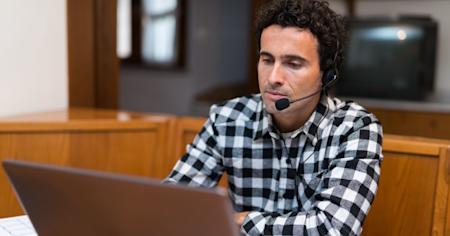Why is Secure Remote Access Important?
Having a secure remote access solution and following best practices to ensure your data is safe is vital. Since remote access enables accessing a company device from anywhere in the world over the public Internet, security is an important consideration.
Plus, if you’re using to remote access to provide support to your customers’ computers and devices, then you can potentially put your customers’ data at risk too whenever a security issue arises. This can cause irreparable damage to your reputation and business.
There are two ways to help ensure you’re following the best practices to securing remote access.
Make sure your remote access provider has top notch security standards/features.
Properly use the security features and define a policy for your users to follow when using remote access.
Find out how you can be sure your remote access software is secure, and what you can do to proactively keep your data safe below.
Selecting the Most Secure Remote Access Solution
Not all remote desktop solutions are equal when it comes to security. In fact, there are some you should avoid at all costs, and others which are the gold standard in remote access security (like Splashtop).
When it comes to remote access software providers, look into what they do to keep their infrastructure secure, and what security features they offer to their users.
It’s highly critical that remote access providers keep their infrastructure secure. If not, the remote access company’s users and the users’ own customers could become compromised!
This makes remote access providers a popular target of cyberattacks. For example, LogMeIn’s LastPass recently had a vulnerability exploited. In 2016, TeamViewer users flooded internet forums with complaints that their accounts were compromised. Also in 2016, GoToMyPC users were required to reset their passwords after the company said it was the target of a “password re-use attack”.
As far as features, many remote desktop solutions offer security features you can use to both keep your account secure, and to help enforce policies that keep your company’s data secure.
Is Splashtop Secure?
Yes, Splashtop’s remote access and remote support solutions are highly secure. All connections are protected with TLS and 256-bit AES encryption. Splashtop also comes with top security features including device authentication and two-factor authentication. Plus, Splashtop’s cutting-edge infrastructure provides a secure computing environment with advanced intrusion prevention and firewalls at multiple layers.
Splashtop also offers an on-premise solution, Splashtop On-Prem, for those who want to host Splashtop on their own servers for added protection. With Enterprise and Enterprise Remote Support, you can integrate Splashtop with Active Directory.
Finally, Splashtop’s remote access security also helps organizations operating in industries with strict regulations and standards (HIPAA, GDPR, PCI, and more). You can learn more about Splashtop compliance.
Read more about Splashtop remote access security.
How to Secure Remote Access: Steps for a Safe Setup
Determine a security policy for your organization that includes which level of access certain groups/levels of employees will have and which level of account verification you want to enable or enforce. Here are the security features you can enable in Splashtop:
When creating deployment packages in the Splashtop Console, you can enable or disable:
Windows or Mac login when connecting remotely
Request permission to connect to the user’s computer
Automatically blank the remote screen when connected
Automatically lock remote computer when disconnected
Lock the remote computer’s keyboard and mouse while in session
Lock the streamer settings using Splashtop admin credentials
In your Splashtop Account Settings, you can enable Two-step verification
In your Splashtop Account Team Settings, you can enable or disable the following features:
In-session file transfer
Out-of-session file transfer
Remote print
Text copy/paste
Remote wake
Remote Reboot
Out-of-session chat
Session recording
Concurrent remote sessions
Remote command
Group-specific admin roles
Secondary user access to Management tab in the Splashtop Console
Secondary user permission to see groups
Allow secondary users to trust devices during two-step verification process
Require admins to use two-step verification
Require secondary users to use two-step verification
Customize who receives device authentication emails
As you can see, you have a lot of options that will help you set up secure remote access policies for your team.
When setting up your users and devices, make sure you group them appropriately and give your users access permission only to the computers that they need to access.
One more important tip: After a device is authenticated under your account, it will be able to access the devices it has permissions to connect to. If that device is no longer in use, or has been lost, then make sure you delete that device from your account.
Whatever policy you create, make sure it is clearly defined and accessible to all your users.
Get Started with Splashtop: The Most Secure Remote Access Solution
Splashtop offers reliable, fast, and secure remote desktop solutions at the best price. Learn more about Splashtop’s solutions and try them for free.

